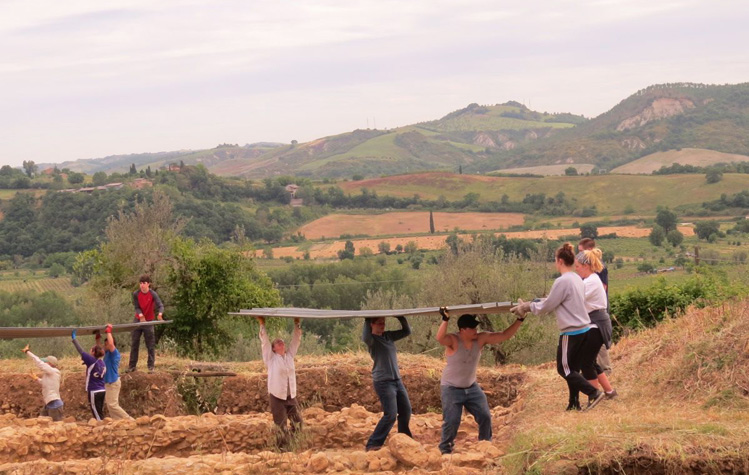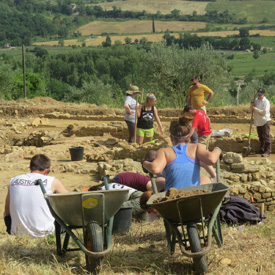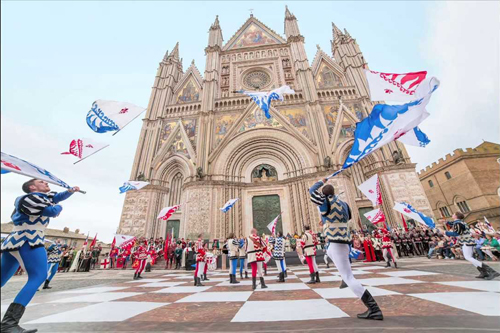historical cultural offerings:
- The Duomo of Orvieto is one of the most beautiful cathedrals in Italy. Its golden mosaic facade is particulary striking in the late afternoon sun. Inside its main chapels house the Corporal of the miracle of Bolsena and Signorelli's fresco cycle masterpiece.
- Archaeological Museum located in the medieval Palazzo Papale, the museum holds finds from the Orvieto area. Some of the many highlights include red-figure Etruscan vases, a full suit of bronze age armor, and the Golini tomb frescoes.
- Museo Claudio Faina houses one of Italy's foremost collection of Etruscan artefacts, including sarcophagi, bronzes, buccheri, terracottas, as well as important Attic red and black figure vases (with 3 by Exekias) in a palace setting.
- Etruscan Necropolis at Crocifisso del Tufo, located on the north side of Orvieto's cliff, dates back to the sixth century b.C. and is named after a sixteenth century cross dug out of tufa rock. The tombs, lined up along straight roads following an orthogonal layout, look like actual residential areas. Many tombs display Etruscan inscriptions.
- Saint Patrick's Well built at the behest of Clement VII, this double helix ramped cylindrical well is 174.4 ft deep with a base diameter 43 ft, 248 steps and 70 windows to provide illumination.
- Orvieto Underground tours a world beneath the city, created by its ancient inhabitants through 2500 years of uninterrupted digging.
- Archaeological and Environmental Park rings the cliffs of the city, providing a walking trail and access to the archaeological and scenic-environmental heritage of Orvieto.
- inorvieto website a guide to cultural events and offerings in Orvieto
current news in Orvieto:


 Daily Schedule
Daily Schedule
 Major festivals are held in Orvieto in May and June: The Festa del Palombella and the Festa del Corpus Domini are religious celebrations full of pagentry with historical parades, exhibitions, theater and open air markets. There are often free concerts and operas. And Orvieto has even more to offer. The local food is amazing: pizza, pasta, gelato, anything with truffles, cinghiale (wild boar) and the world famous Orvieto Classico. All this is within a 15 minute walk from the dig house.
Major festivals are held in Orvieto in May and June: The Festa del Palombella and the Festa del Corpus Domini are religious celebrations full of pagentry with historical parades, exhibitions, theater and open air markets. There are often free concerts and operas. And Orvieto has even more to offer. The local food is amazing: pizza, pasta, gelato, anything with truffles, cinghiale (wild boar) and the world famous Orvieto Classico. All this is within a 15 minute walk from the dig house.